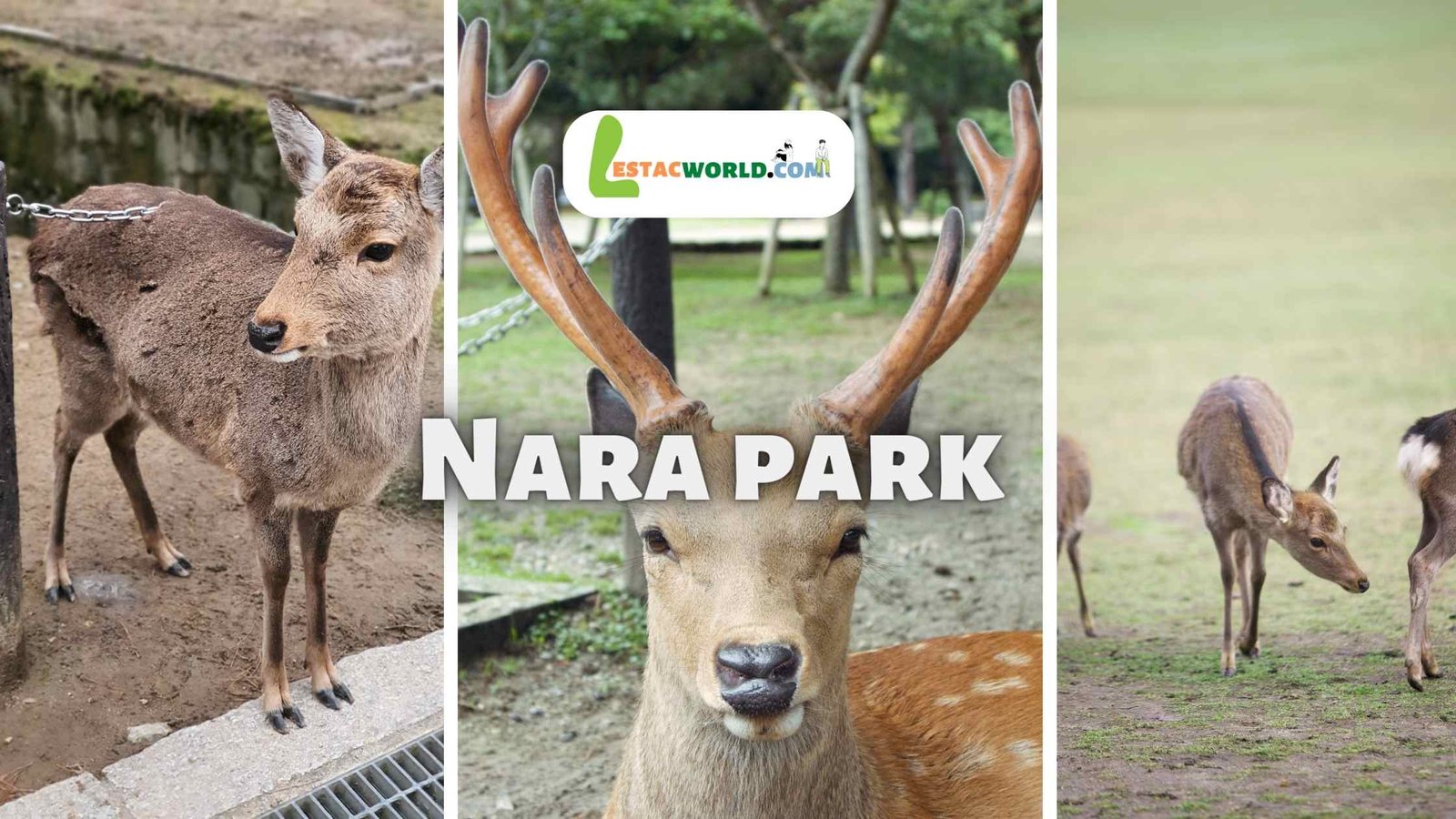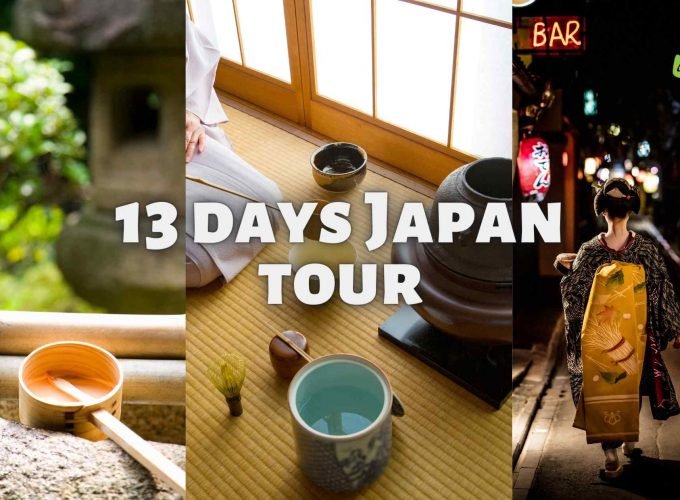About Nara Park
The city of Nara, which is located in Japan, is home to a large public park known as Nara Park. It has an area of approximately 500 hectares and is well-known for the natural beauty of its surroundings, the ancient landmarks it contains, and the population of friendly deer it has. The park contains a number of Nara’s most well-known tourist destinations, such as the Todai-ji Temple, the Kasuga-taisha Shrine, and the Nara National Museum.
Nara Park has a long and illustrious history that can be traced back to the year 710, when it was first included in the construction of the brand new capital city of Nara. It has been used for a variety of things throughout the course of several centuries, notably by the nobility as a hunting ground, and more recently, as a nature preserve. In the latter half of the 19th century, it was given the status of a public park and initiated the process of becoming a well-known tourist destination.
Nara Park is currently regarded as one of the most popular tourist destinations in all of Japan. This is due to the park’s remarkable combination of natural splendor, cultural sites, and sociable deer that freely roam its grounds. In addition to having the opportunity to learn about Japan’s rich history by touring the park’s numerous ancient temples and shrines, guests may unwind and take pleasure in the park’s reputation as one of the country’s most revered green spaces.
History timeline of Nara Park
Here is a brief history timeline of Nara Park:
- 710: Emperor Genmei decrees that a new capital city will be built in Nara, and Nara Park is established as a part of this new capital.
- 752: Todai-ji Temple is completed in Nara Park and becomes the center of Buddhist practice in Japan.
- 768: Kasuga-taisha Shrine is established in Nara Park, becoming an important Shinto shrine and cultural center.
- 1129: The park is officially designated as a hunting ground for the nobility and is maintained as a nature preserve.
- 1880: The Japanese government designates Nara Park as a public park and begins to develop the area as a popular tourist destination.
- 1958: The National Museum of Nara is established in the park, showcasing the rich cultural history of Nara and Japan as a whole.
- 2010: Nara Park is designated as a UNESCO World Heritage Site, recognizing its importance as a cultural and natural treasure.
Today, Nara Park is a popular destination for tourists and locals alike, offering a unique blend of natural beauty, cultural landmarks, and friendly deer that roam the park’s grounds. Visitors can explore the park’s many historic temples and shrines, as well as relax and enjoy the tranquil atmosphere of one of Japan’s most beloved parks.
How to reach Nara Park
Nara Park is located in the city of Nara, Japan, and is easily accessible by train or bus.
Nara Park By train: The JR Nara Station is located approximately a 20-minute walk from Nara Park. From Kyoto or Osaka, take the JR Yamatoji Line to JR Nara Station. Alternatively, the Kintetsu Nara Station is located approximately a 10-minute walk from Nara Park. From Osaka, take the Kintetsu Nara Line to Kintetsu Nara Station.
Nara Park By bus: Buses from both the JR Nara Station and the Kintetsu Nara Station run regularly to Nara Park. Look for buses heading to “Daibutsu-den Kasuga-taisha-mae” or “Nara Koen” and get off at the nearest bus stop to your destination within the park.
Nara Park By Walking and cycling: Nara Park is also within walking or cycling distance from the city center of Nara. Visitors can rent a bicycle from one of the many rental shops in the city and explore the park and its surroundings at their own pace.
Once you arrive at the park, the major attractions are within walking distance of each other, making it easy to explore on foot.
Do's and Dont's at Nara Park
Here are some important do’s and don’ts to keep in mind when visiting Nara Park:
Do’s:
- Feed the deer with the special crackers, called “shika senbei,” that are sold in the park. These crackers are safe for the deer to eat and will keep them from becoming aggressive.
- Enjoy the natural beauty of the park, which is home to over 1,000 cherry blossom trees, as well as several ponds and walking paths.
- Take your time exploring the many historic landmarks and cultural sites within the park, including Todai-ji Temple, Kasuga-taisha Shrine, and the Nara National Museum.
- Take plenty of photos of the deer and the park’s other attractions, but remember to be respectful of the animals and other visitors.
Don’ts:
- Don’t feed the deer anything other than the special crackers sold in the park. Feeding the deer other food can be harmful to their health and may cause them to become aggressive.
- Don’t approach the deer too closely, as they are wild animals and may become startled or defensive. Keep a safe distance and avoid touching or petting the animals.
- Don’t litter or leave trash in the park. Help keep the park clean and beautiful for everyone to enjoy.
- Don’t disturb the peace and tranquility of the park by making loud noises or engaging in other disruptive behavior. Respect the park’s natural environment and the other visitors who are there to enjoy it.
Reviews of Nara Park by Tourists
Here are some reviews of Nara Park by tourists:
- “Visiting Nara Park was one of the highlights of my trip to Japan. The deer are so cute and friendly, and the park is just beautiful. I highly recommend taking a stroll through the park and checking out some of the historic temples and shrines.” – Sarah, USA
- “Nara Park is an amazing place to visit. The deer are so friendly and you can feed them with special crackers which are available for purchase. The park is also home to several important cultural and historical landmarks, so it’s a great place to learn about Japan’s rich history and culture.” – David, UK
- “Nara Park is definitely worth a visit if you’re in the area. The park is huge and there’s so much to see and do. The deer are the highlight, of course, but there are also many temples and shrines to explore. I highly recommend bringing a picnic and spending the day in the park.” – Ana, Spain
- “Nara Park is one of the most beautiful places I’ve ever visited. The cherry blossoms are absolutely stunning in the spring, and the deer are so adorable. It’s such a peaceful and serene place, and I highly recommend visiting if you have the chance.” – Michael, Canada
- “I had an amazing time at Nara Park. The deer are so cute and friendly, and it was really fun to feed them. The park is also home to some incredible temples and shrines, and the history and architecture are really impressive. I highly recommend visiting this amazing place.” – Sato, Japan
About deers of Nara Park
The deer of Nara Park are a unique and beloved feature of the park. They are known as “sika” in Japanese and are a type of wild deer native to Japan. The deer in Nara Park are considered sacred and are protected by the local government.
There are over 1,000 deer in the park, and they are very friendly and approachable. Visitors can feed the deer with special crackers that are sold in the park, which the deer have come to associate with humans. The deer are used to being around people and will often approach visitors in search of food or attention.
The deer have a long history in Nara Park, dating back to ancient times when they were considered divine messengers. They are still held in high regard today and are a symbol of the city of Nara.
The deer are a popular attraction for visitors to Nara Park, and many people come to the park specifically to interact with them. However, it’s important to remember that they are wild animals and should be treated with respect. Visitors should not feed them anything other than the special crackers sold in the park and should avoid touching or petting them. Overall, the deer of Nara Park are a unique and special part of Japan’s cultural heritage and a must-see for any visitor to the area.








Comment (0)